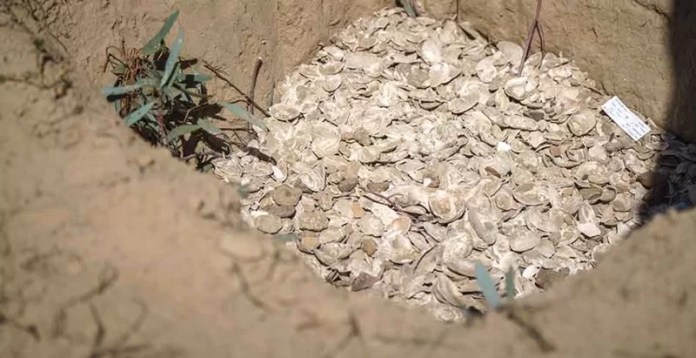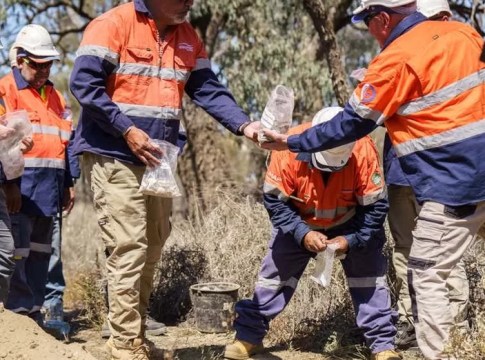Reclaiming History: Indigenous Artefacts Returned to Barkindji Country
In a powerful act of reconciliation and respect, hundreds of ancient Aboriginal artefacts, some dating back 3,000 years, have been returned to their rightful place on Barkindji Country in south-western New South Wales. This milestone follows the completion of significant portions of Australia’s largest transmission project, EnergyConnect.
The journey to repatriation has been one of deep collaboration between Transgrid, construction partner Elecnor Australia, and the Barkindji Traditional Custodians.
The Barkindji people are an Aboriginal tribal group and the Traditional Custodians of the Darling River basin in New South Wales. Their name, “Barkindji,” translates to “Darling people.”
Extensive heritage surveys conducted over four years identified culturally significant artefacts along EnergyConnect’s 159-kilometer western alignment. These artefacts were meticulously salvaged, catalogued, and safeguarded until their return.
A Ceremony of Healing
Repatriation and smoking ceremonies marked the return of these cultural treasures to Country. Barkindji Elder Uncle Arthur Kirby reflected on the profound spiritual connection these artefacts represent, saying, “If you come out here in the still of the night, you will hear their voices carried on the wind. For the last 40,000 years, these people have been looking after this Country and they are looking after it still today.”
The artefacts—521 stone tools, 30 kilograms of shell middens, and 25 kilograms of ancient campfire remains—offer a glimpse into millennia of Aboriginal life.
Found near water sources such as the Murray River, Darling River, Greater Anabranch, and Lake Victoria, these items illustrate the enduring relationship between Aboriginal communities and their waterways.
Transgrid PR video:
Uncle Arthur Kirby said “it’s a spiritual thing connects us to the land and if they taken away we lose that connection.”
Honoring Tradition
At the request of Registered Aboriginal Parties, the artefacts were buried without plastic enclosures, a practice approved by the NSW Government. Instead, they were respectfully wrapped in native eucalyptus leaves and vegetation, preserving their connection to the natural environment.
Detailed records of the artefacts were placed within the 27 repatriation pits along the 135-kilometer corridor between Buronga and the South Australian border and the 24-kilometer stretch from Buronga to Red Cliffs in Victoria.
Maryanne Graham, Transgrid’s Executive General Manager of Stakeholder, Regulatory and Corporate Affairs, emphasized the importance of this process, stating, “Reconciliation isn’t just about words – it requires real and meaningful action. We’re proud to have honored our commitment to the Traditional Custodians by repatriating these culturally significant artefacts with respect and care.”

Shell middens were carbon dated and estimated to be almost 2,000 years old. This area would have had a few thousand people congregating feasting on the local resources of the river.
A Community Effort
The project has gone beyond cultural preservation. It has provided local Aboriginal communities with employment and training opportunities, supported Indigenous businesses, and funded community projects through Transgrid’s Community Partnerships Program. This holistic approach reflects a broader commitment to reconciliation and sustainable development.
Uncle Arthur Kirby expressed pride in the collaboration, saying, “We look at our culture as a Bible… through this, we can say that we did the right thing, and they [our ancestors] can say that proudly. I think everybody’s at peace.”
Preserving Heritage
The EnergyConnect project, which plays a key role in transitioning Australia to clean energy, demonstrates that progress and cultural preservation can coexist. By engaging with Traditional Custodians and respecting cultural heritage, Transgrid has set a precedent for integrating reconciliation into infrastructure development.
As these artefacts rest once again on Barkindji Country, they continue to tell the story of an enduring culture. Their return is more than a symbolic act; it is a step toward healing, recognition, and respect for one of the world’s oldest living cultures.
For more about Transgrid’s cultural heritage and reconciliation commitments, visit their community page.
Related stories
Koonalda Cave Vandals Destroy Ancient Aboriginal Treasure
Pre-Columbian Art: The mystique of ancient artifacts
Australian Aboriginal spears taken by James Cook repatriated
Advertisement:




